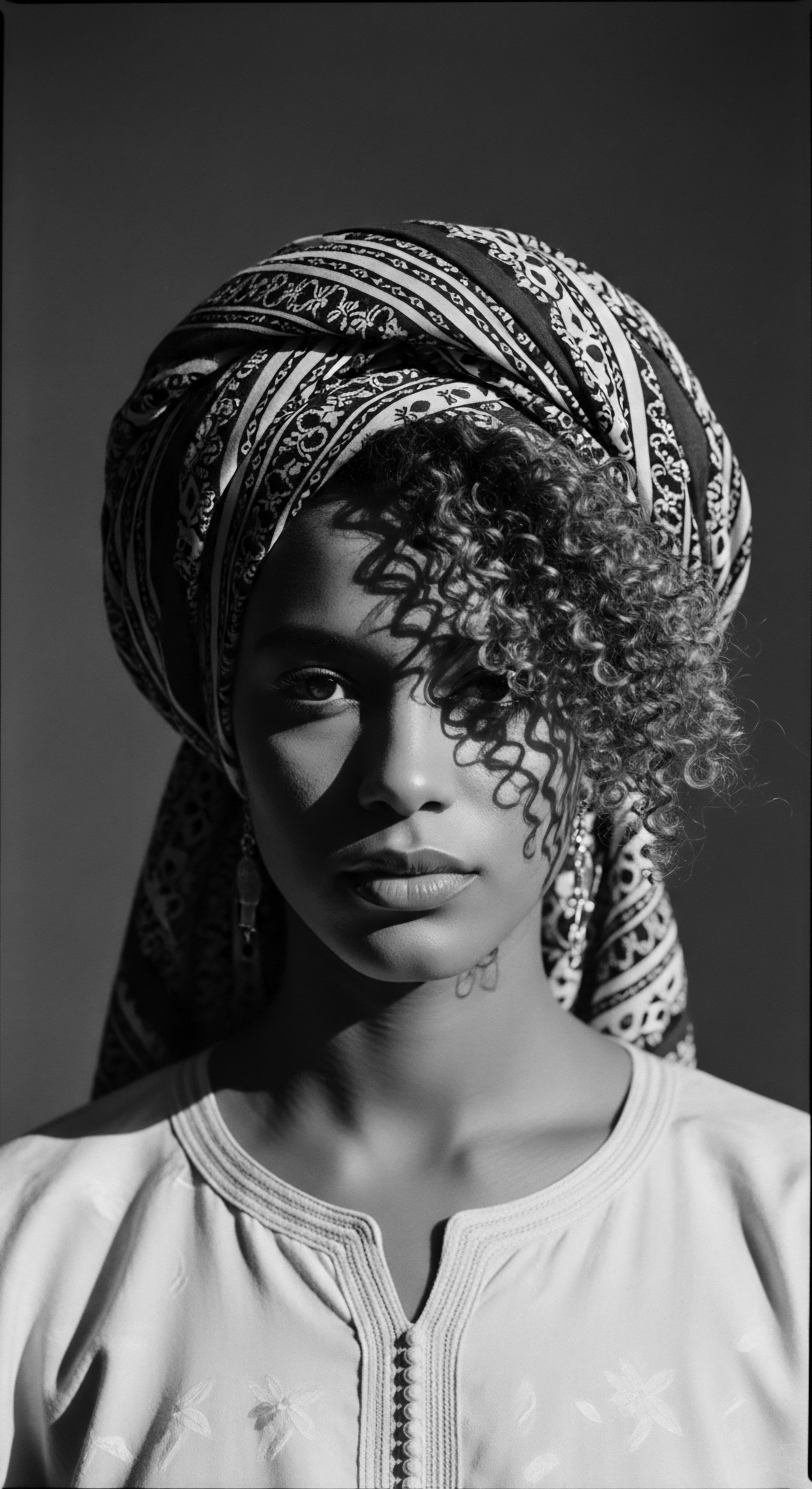
Fundamentals
The concept of Coily Hair History is not merely a chronicle of hairstyles or a linear progression of beauty trends; it is a profound journey through time, a testament to the resilience, artistry, and deep cultural connections embedded within textured hair. This history is a living library, where each coil and strand holds stories of identity, ancestral practices, and unwavering spirit. It represents the collective memory of Black and mixed-race communities, chronicling their experiences with hair from ancient African civilizations to contemporary global expressions.
At its simplest, Coily Hair History is the chronological exploration of how coily hair, characterized by its tight, spring-like curl pattern, has been perceived, styled, cared for, and politicized across different eras and geographies. This exploration encompasses its biological uniqueness, the myriad traditional practices developed for its care, and its symbolic significance as a marker of heritage and selfhood. Understanding this history means recognizing hair not as a superficial adornment, but as a central element in cultural narratives and personal journeys.
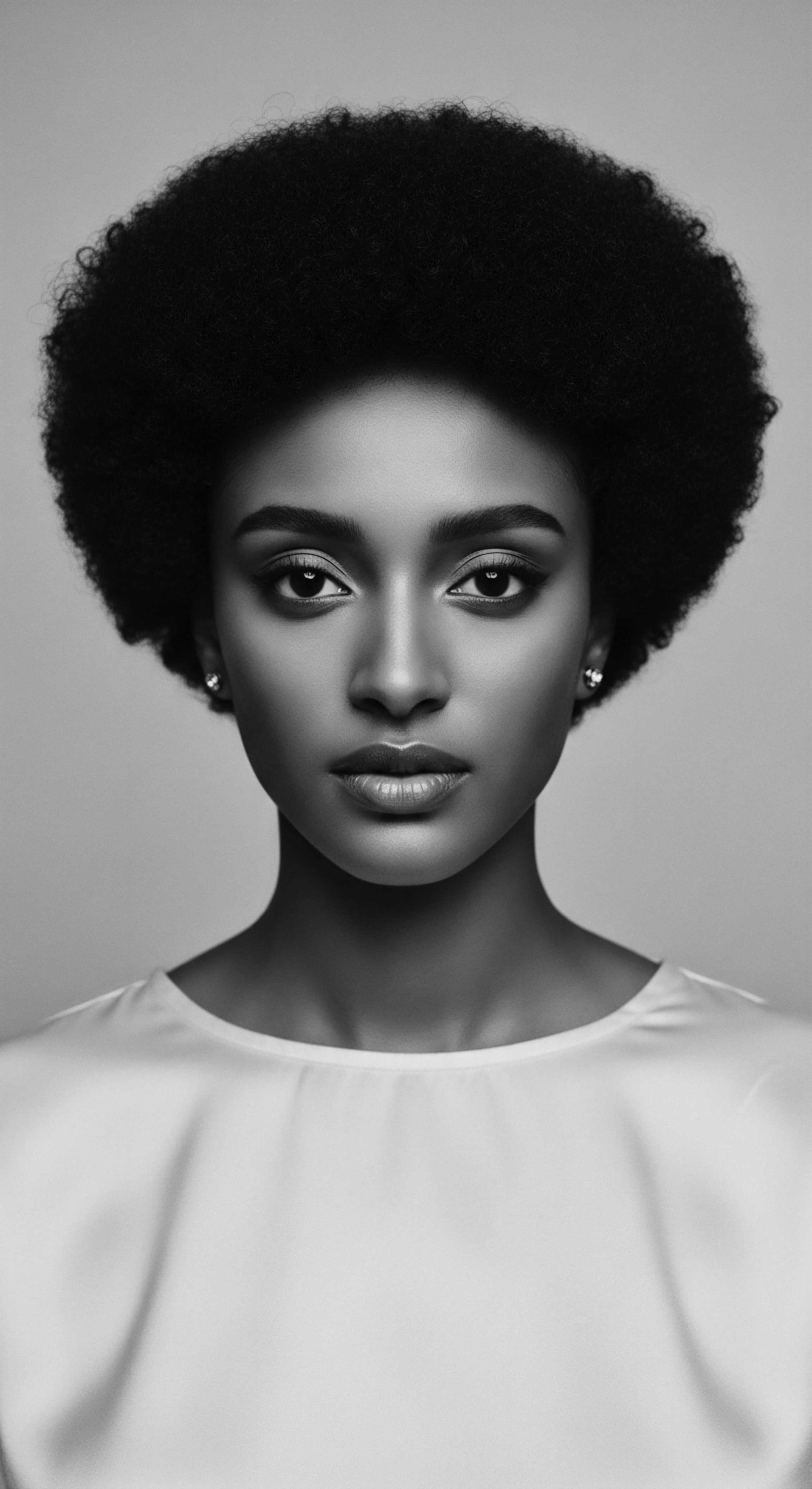
Ancient Roots and Communal Threads
Long before documented history, coily hair was revered across various African societies. Its natural form was celebrated, often adorned with shells, beads, and precious metals, reflecting social standing, marital status, age, and even spiritual beliefs. The act of hair styling was a communal ritual, a time for sharing stories, wisdom, and strengthening familial bonds. These practices, deeply woven into daily life, underscore the initial meaning of coily hair as a symbol of connection and belonging.
- Cultural Communication ❉ In many West African communities, hairstyles served as a visual language, conveying information about an individual’s identity, status, and affiliations.
- Spiritual Significance ❉ Some communities believed hair, as the highest point of the body, connected them to the divine and served as a portal for spirits.
- Communal Bonding ❉ The time-consuming process of braiding and styling hair fostered social interaction and the intergenerational transmission of knowledge.
The meticulous care and intricate styles of ancient Africa speak to a profound appreciation for coily hair in its natural state. This historical foundation is critical to understanding the enduring legacy and contemporary resurgence of natural hair pride.
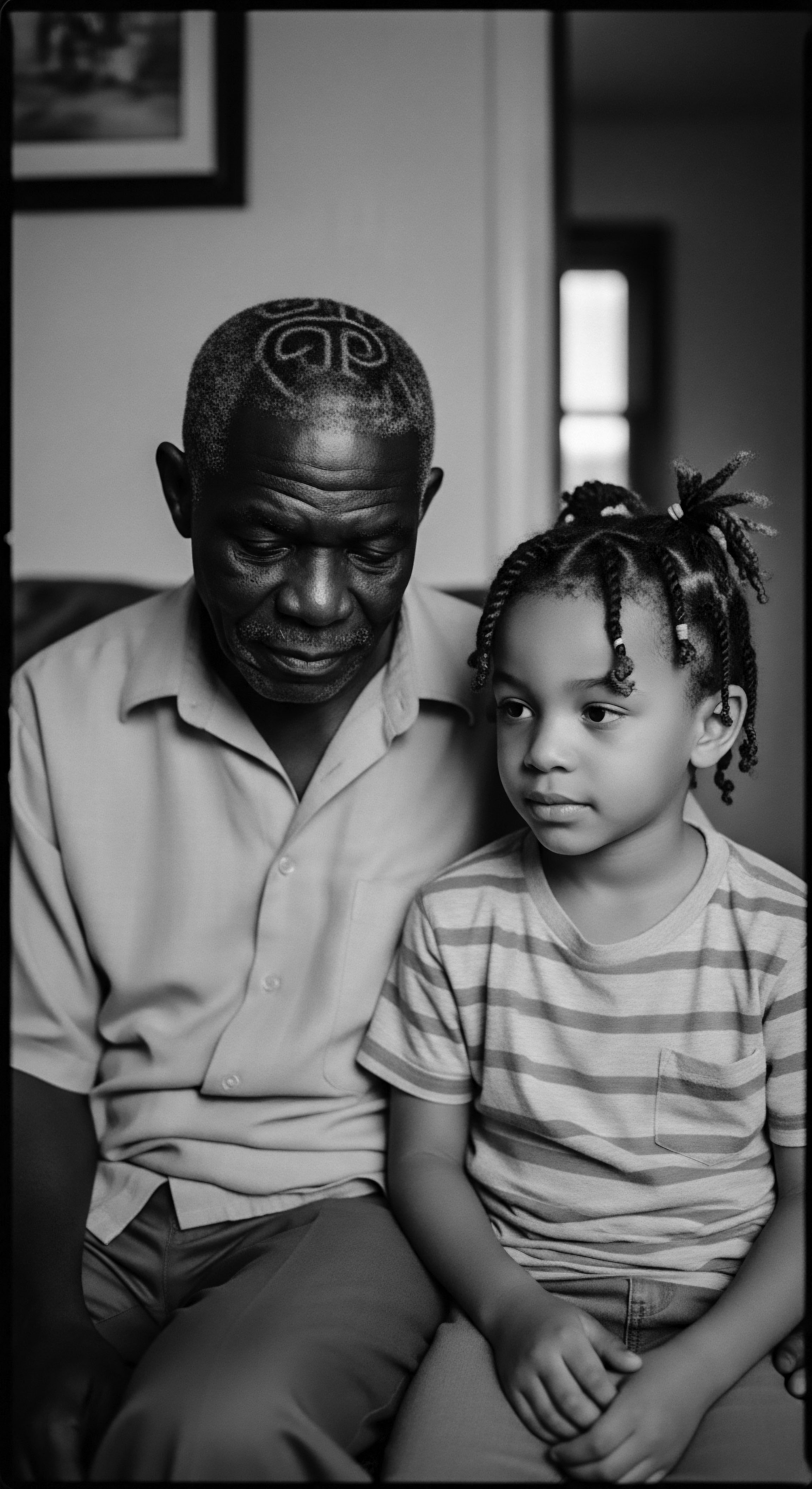
Intermediate
The intermediate understanding of Coily Hair History expands beyond a simple timeline, delving into the complex interplay of societal forces, cultural resistance, and the enduring spirit of textured hair. It explores how the inherent beauty and cultural significance of coily hair faced systematic devaluation, yet consistently found pathways for expression and reclamation. This deeper exploration reveals the multifaceted meaning of coily hair as a site of both oppression and profound self-affirmation.
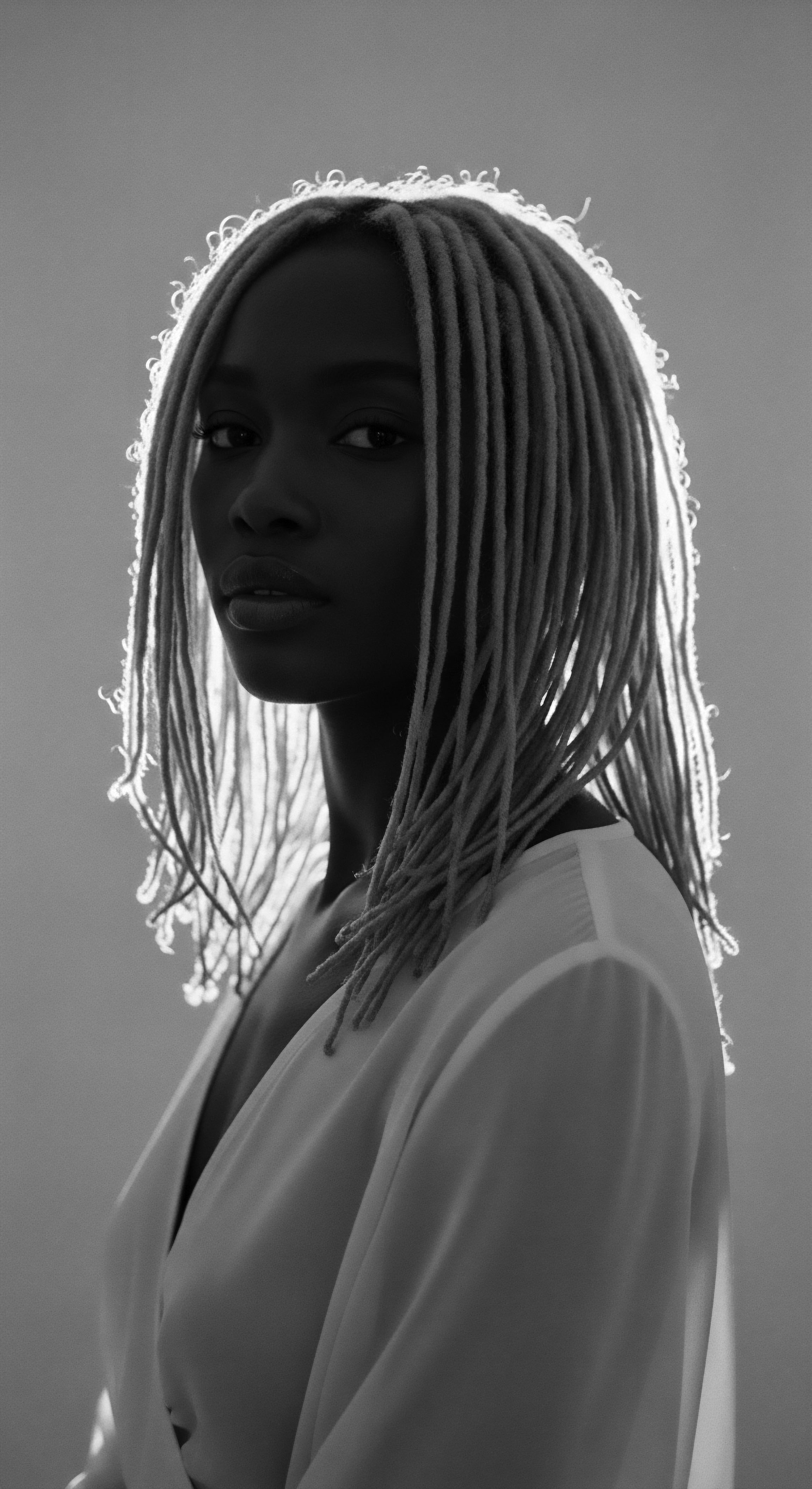
The Disruption of Displacement and the Struggle for Self-Expression
The transatlantic slave trade marked a traumatic rupture in the heritage of coily hair. Enslaved Africans were forcibly stripped of their cultural practices, including the communal rituals and intricate styling of their hair. Hair was often shaved upon capture and transport, a deliberate act of dehumanization aimed at erasing identity and cultural ties. This violent imposition laid the groundwork for centuries of struggle against Eurocentric beauty standards that pathologized tightly coiled hair as “inferior” or “unprofessional”.
The forced removal of hair during the transatlantic slave trade communicated a deliberate intent to erase the identities and cultures of enslaved Africans, a profound disruption of ancestral heritage.
Despite immense pressure, ancestral practices persisted. Enslaved people adapted, using what meager resources they could find, such as kerosene, bacon grease, or butter, to care for their hair. Communal hair care on Sundays became a tradition, a quiet act of defiance and connection, where techniques like threading and plaiting were used to achieve defined curls. This period highlights the ingenuity and resilience embedded within the history of coily hair care.
The historical context of hair discrimination is not confined to the era of slavery. Post-emancipation, the societal pressure to conform to European beauty ideals led many Black individuals to straighten their hair using harsh chemicals or hot tools, often at great personal cost to hair health. Laws such as the Tignon Laws in 18th-century Louisiana, which mandated that free Black women cover their elaborately styled hair, serve as stark examples of institutional attempts to control Black identity through hair. Yet, even within these constraints, Black women transformed headwraps into ornate expressions of cultural pride.
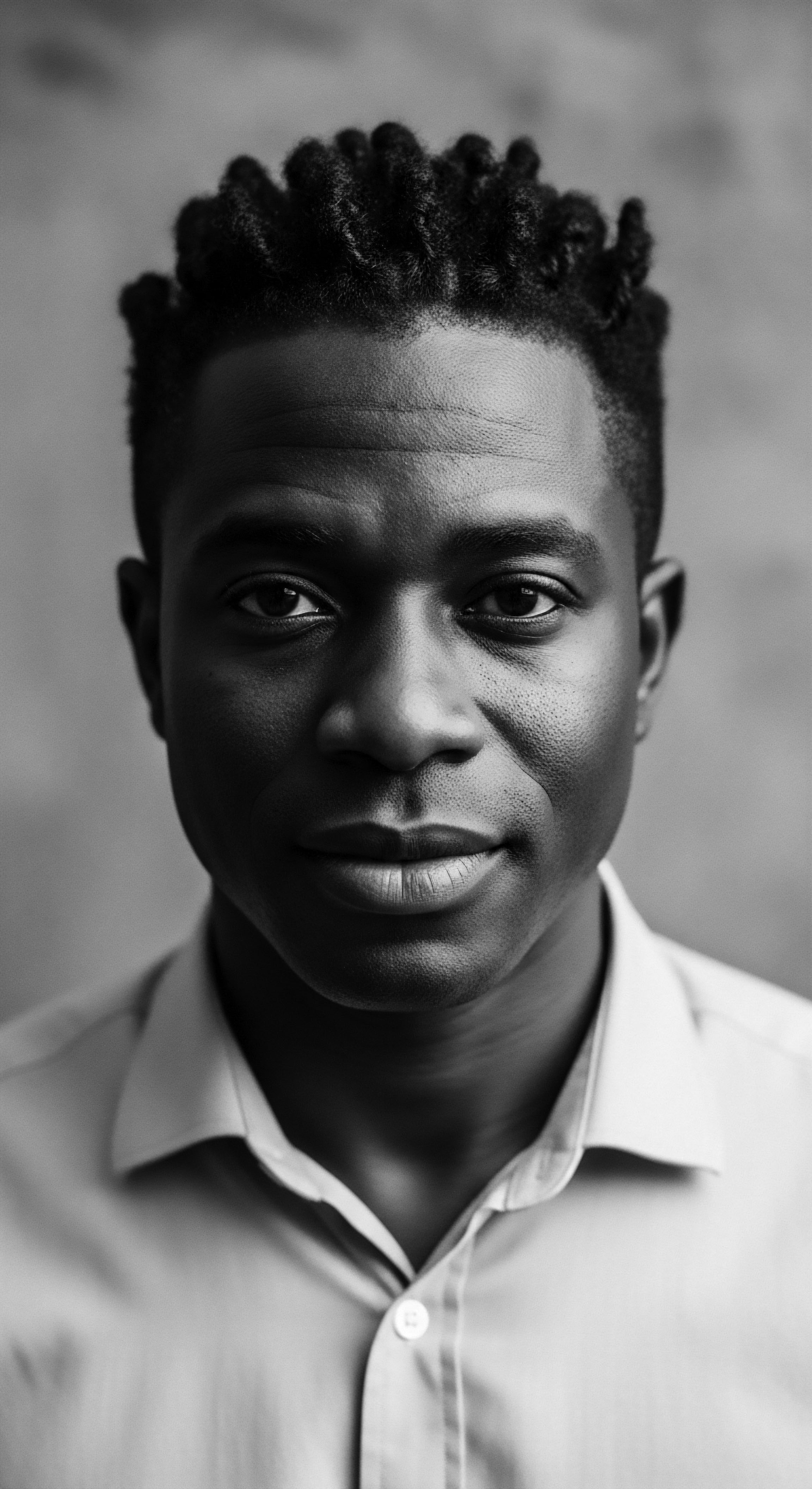
Waves of Reclamation ❉ The Natural Hair Movement
The 20th century witnessed powerful waves of reclamation for coily hair. The first significant wave emerged during the Civil Rights Movement of the 1960s, with the “Black Is Beautiful” movement. The Afro became a potent symbol of Black power, pride, and a direct challenge to white beauty standards. Activists like Angela Davis sported the Afro as a sign of rebellion and solidarity.
This era underscored the political and social dimensions of coily hair, transforming it into a public declaration of self-love and racial equality. A 1972 study in St. Louis, though small in scope, revealed that 40% of young Black women embraced their natural kinks, a notable increase from previous decades.
The second wave of the natural hair movement, beginning in the 2000s, has been largely propelled by digital platforms and a renewed desire for authentic self-expression. This contemporary movement emphasizes celebrating the diversity of coily and textured hair, fostering communities around natural hair care, and challenging persistent biases in workplaces and schools.
| Historical Period / Practice Ancient African Hair Threading (Irun Kiko) |
| Description and Heritage Connection A protective style among the Yoruba people of Nigeria, dating back to the 15th century, involving flexible threads to wrap hair into corkscrew patterns. This honored the head as sacred and brought good fortune. |
| Historical Period / Practice Communal Hair Care (Slavery Era) |
| Description and Heritage Connection Sundays became a dedicated time for enslaved people to braid and care for each other's hair using available resources like butter or goose grease, fostering community and preserving a semblance of traditional care. |
| Historical Period / Practice Hot Comb Era (Late 19th – Mid 20th Century) |
| Description and Heritage Connection The widespread use of heated metal combs to straighten coily hair, often resulting in scalp burns, reflected societal pressure to conform to Eurocentric beauty ideals before the advent of chemical relaxers. |
| Historical Period / Practice Madam C.J. Walker's System (Early 20th Century) |
| Description and Heritage Connection Pioneering entrepreneur Madam C.J. Walker developed hair care products specifically for Black women, addressing scalp conditions and hair loss, creating economic opportunities while shifting beauty standards. |
| Historical Period / Practice Natural Hair Movement (1960s & 2000s) |
| Description and Heritage Connection A sociopolitical movement encouraging people of African descent to embrace their natural, afro-textured hair as a symbol of pride, identity, and resistance against Eurocentric beauty standards. |
| Historical Period / Practice This table illustrates the enduring spirit of adaptation and innovation within coily hair care, from ancient wisdom to responses against oppressive beauty norms, always rooted in heritage. |
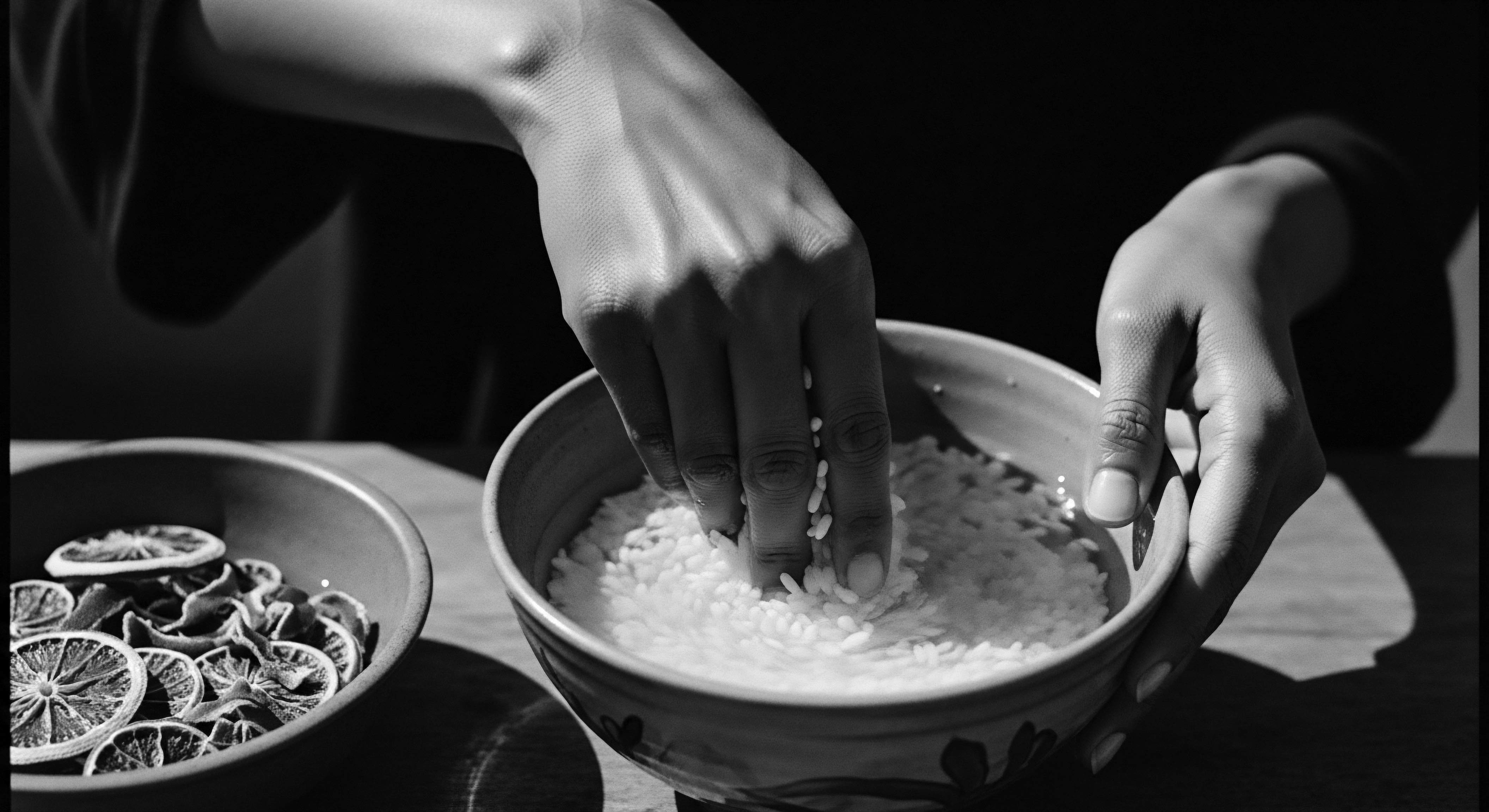
Academic
The academic definition of Coily Hair History transcends a mere recounting of events; it represents a critical examination of how hair, particularly its coily morphology, functions as a powerful socio-cultural construct, a biological identifier, and a dynamic archive of Black and mixed-race experiences within the global diaspora. This perspective demands an interdisciplinary lens, drawing upon anthropology, sociology, ethnobotany, and critical race theory to dissect the profound significance of coily hair as a repository of heritage, resistance, and evolving identity. The meaning of Coily Hair History, therefore, is its delineation as a continuous, lived phenomenon, where past oppressions and ancestral wisdom perpetually inform present-day expressions and future aspirations.
Coily hair, from a biological standpoint, possesses a unique helical structure, characterized by its tight, elliptical cross-section and numerous bends along the hair shaft. This inherent structure, while lending itself to incredible volume and diverse styling, has historically been pathologized within Western beauty paradigms. The colonial gaze, intertwined with pseudo-scientific racial classifications, systematically devalued Black phenotypic traits, including hair texture, to legitimize enslavement and subjugation (Byrd and Tharps, 2014; Menand, 2002; White and White, 1995, as cited in). This historical denigration transformed a natural biological characteristic into a site of social stratification and racialized prejudice.
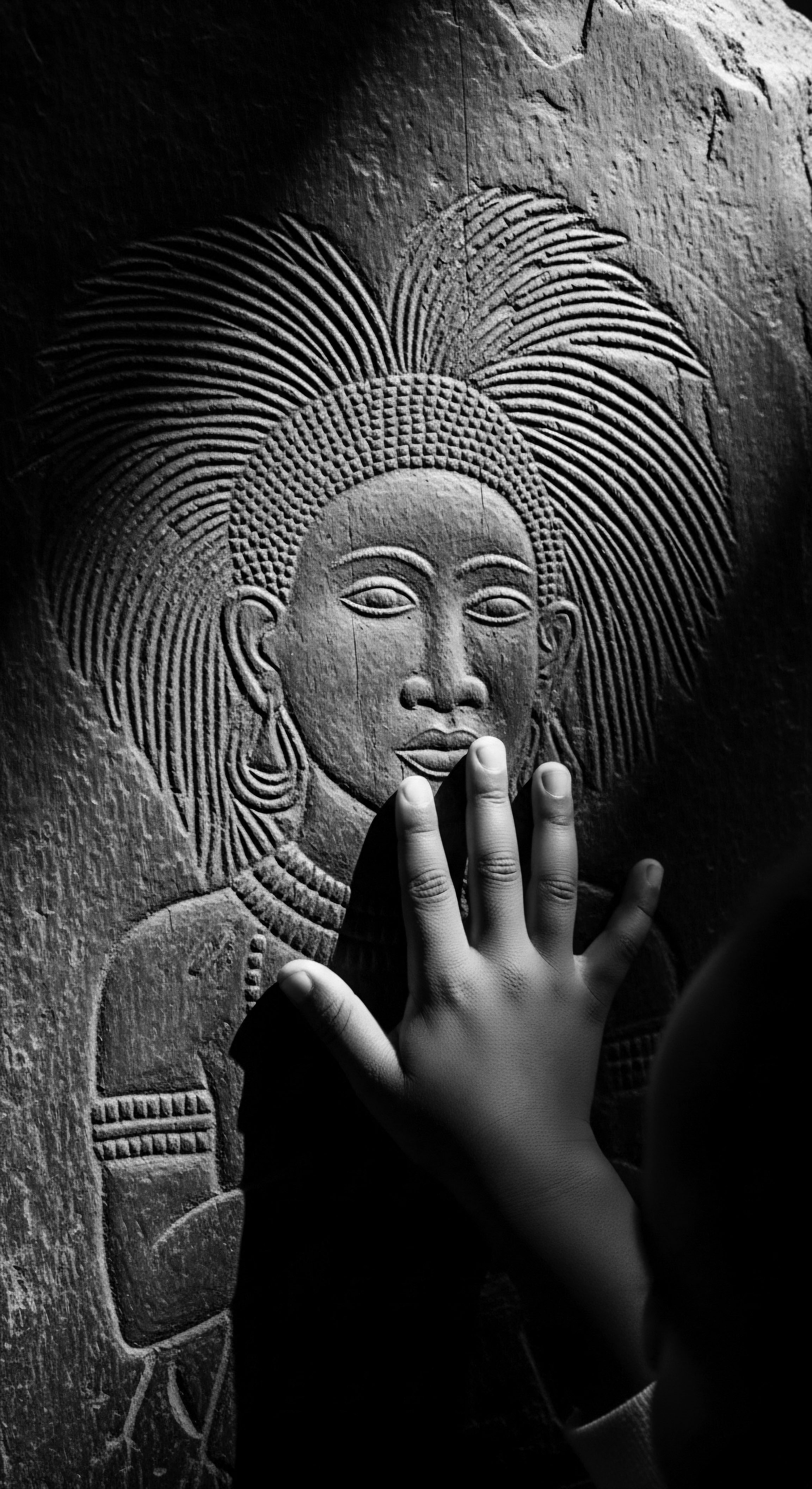
The Epistemology of Hair ❉ Ancestral Knowledge Systems
Prior to and during the transatlantic slave trade, hair in various African societies functioned as a sophisticated communication system and a repository of communal knowledge. Hairstyles conveyed intricate details about an individual’s social status, marital status, age, wealth, tribal affiliation, and even spiritual beliefs. The practice of hair grooming was not merely aesthetic; it was an educational and social ritual.
Elders would braid children’s hair, imparting genealogies, cultural narratives, and ethical lessons during these extended sessions. This embodied knowledge, passed down through generations, represents an alternative epistemology—a way of knowing and transmitting cultural truths through tangible, lived practices.
The systematic shaving of heads during the Middle Passage was a deliberate act to sever these profound connections, aiming to strip enslaved individuals of their identity and cultural memory. However, the resilience of these ancestral practices is evident in their covert continuation. Enslaved Africans adapted traditional braiding techniques, sometimes even using cornrows as covert maps for escape routes. This transformation of a beauty practice into a tool of liberation underscores the deep meaning of coily hair as a symbol of resistance.
Coily hair serves as a profound archive of Black and mixed-race experiences, where ancestral wisdom, resilience, and identity are intricately woven into its very strands.

Hair as a Locus of Discrimination and Civil Rights Struggle
The enduring legacy of slavery and colonialism manifested in pervasive hair discrimination that extended well beyond formal emancipation. The “good hair” versus “bad hair” dichotomy, deeply rooted in Eurocentric beauty standards, forced many Black individuals to chemically alter their hair texture for social and economic acceptance. This pressure created a harmful cycle, often leading to scalp damage from harsh relaxers and contributing to psychological distress and mental instability due to the constant devaluation of natural Black aesthetics. As Sybil Dione Rosado (2007) argues, hair texture and hairstyle choices carry profound symbolic meanings among women of African descent, serving as a critical marker of race and group identity in the African Diaspora.
The Civil Rights Movement of the 1960s marked a pivotal moment, as the “Black Is Beautiful” movement directly challenged these ingrained biases. The adoption of the Afro, and later other natural styles like braids and dreadlocks, became a powerful political statement, signifying self-acceptance and a rejection of oppressive beauty norms. This period highlights the strategic importance of hair as a visible site for challenging systemic racism and asserting collective identity.
The movement spurred not only cultural shifts but also economic opportunities, with Black entrepreneurs like Madam C.J. Walker and Annie Turnbo Malone having previously laid foundational groundwork for the Black hair care industry.
Even in contemporary society, hair discrimination persists, manifesting in workplace and school policies that disproportionately target natural Black hairstyles. This ongoing struggle has led to legislative efforts like the CROWN Act (Creating a Respectful and Open World for Natural Hair) in the United States, which prohibits race-based hair discrimination. The existence of such legislation underscores the continued need to dismantle discriminatory practices and affirm the inherent dignity of coily hair.
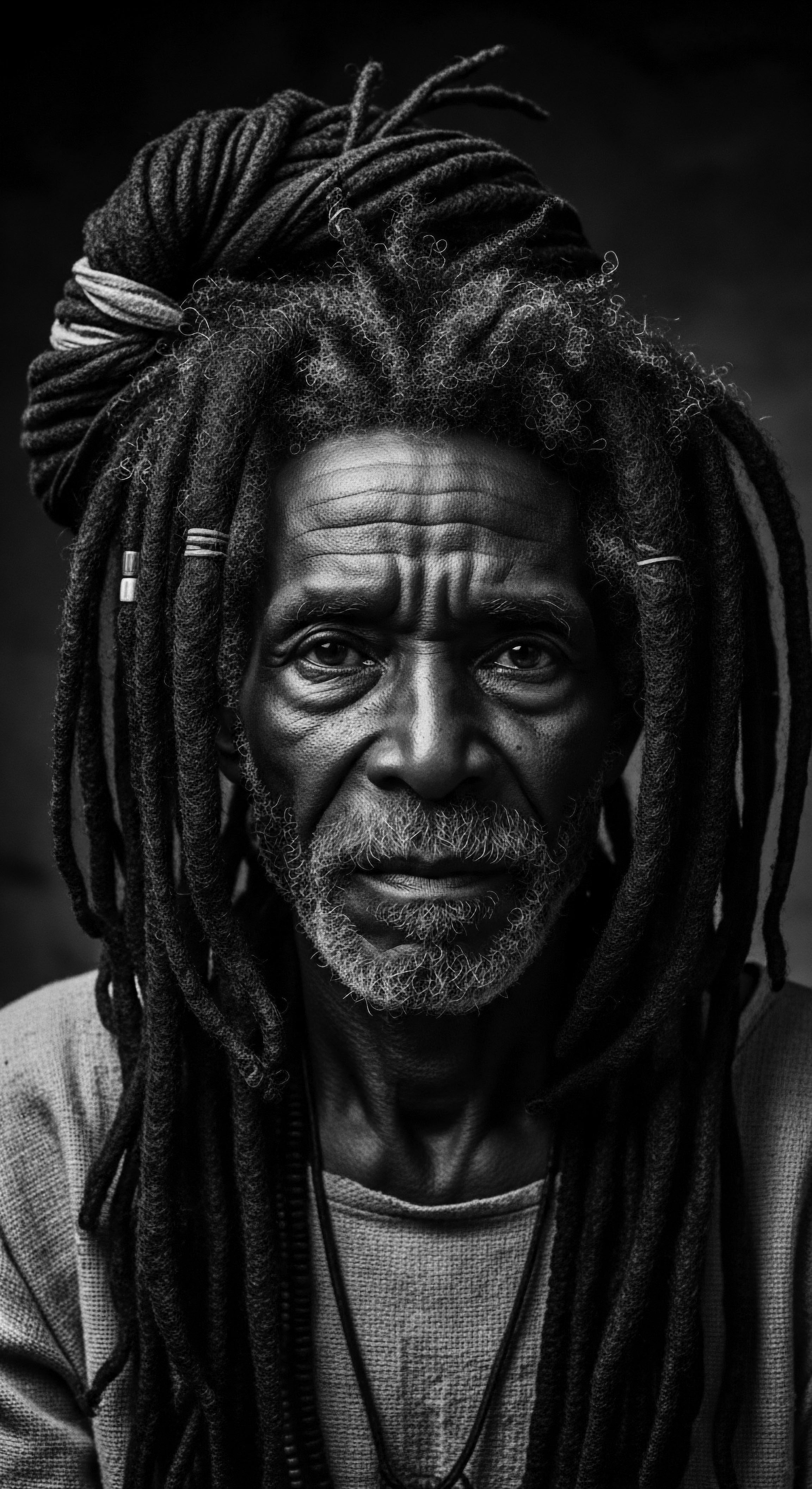
The Economic and Social Tapestry of Coily Hair
The economic landscape surrounding coily hair is equally complex and revealing. The Black hair care market is a significant economic force, valued at billions of dollars annually, with Black women historically spending considerably more on hair care than their counterparts. Despite this substantial consumer base, a significant portion of the industry has historically been controlled by non-Black entities. This dynamic highlights a historical disempowerment, where the economic benefits of Black hair care have not always flowed back into the communities that drive its demand.
The rise of Black-owned businesses and the increasing visibility of natural hair on digital platforms represent a powerful shift towards economic self-determination and cultural affirmation. The modern natural hair movement, amplified by social media, has not only spurred a cultural shift but also fostered a new wave of entrepreneurship, particularly among Black women. This demonstrates how the collective embrace of coily hair as a symbol of heritage translates into tangible economic and social empowerment.
The sociological implications of coily hair extend to its role in shaping identity, fostering community, and serving as a barometer for societal acceptance. Hair salons and barbershops in Black communities have historically functioned as vital social and economic hubs, places where community news is exchanged, bonds are strengthened, and cultural norms are reinforced. This communal aspect of hair care continues to be a cornerstone of Black identity, offering a space for shared experience and collective resilience.
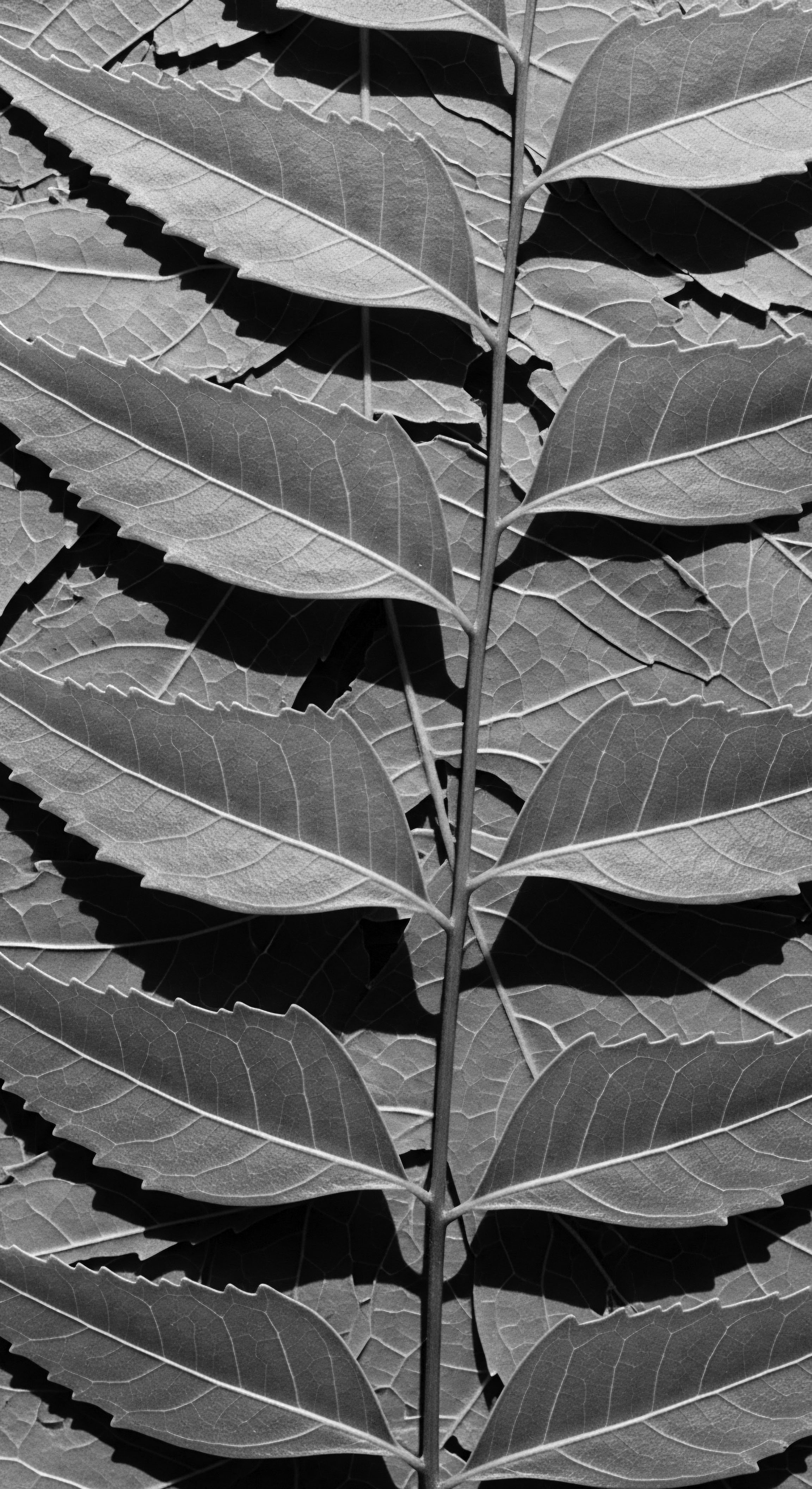
Reflection on the Heritage of Coily Hair History
The journey through Coily Hair History is more than a mere academic exercise; it is a heartfelt communion with the very Soul of a Strand. Each twist and turn, every resilient curl, whispers tales of ancestral wisdom, echoes the joyous rhythms of communal care, and proclaims the unyielding spirit of identity. This living library of Roothea does not simply record the past; it breathes life into it, inviting us to feel the enduring pulse of textured hair heritage.
From the ancient riverbanks where intricate braids communicated profound societal truths, to the quiet defiance of enslaved hands tending to hair in the dim light of dawn, and on to the vibrant assertions of identity in modern movements, coily hair has always been a beacon. It is a testament to the ingenuity of those who cultivated its beauty with reverence, often using ingredients drawn directly from the earth, and a symbol of strength for those who refused to let its natural form be diminished. The story of coily hair is one of continuous adaptation, an unbreakable thread connecting generations through shared experiences of challenge and triumph.
The journey of coily hair is a testament to the enduring power of heritage, a narrative of resilience and self-love etched into every resilient curl.
The ongoing embrace of coily hair today is not a fleeting trend, but a profound homecoming, a conscious decision to honor the legacy of those who came before. It is a recognition that the care rituals passed down, the styles reclaimed, and the pride asserted are all threads in a continuous, vibrant lineage. As we look upon a head of coily hair, we see not just a physical attribute, but a living, breathing archive of history, a declaration of heritage, and a promise of unbound possibilities.

References
- Byrd, A. & Tharps, L. L. (2001). Hair Story ❉ Untangling the Roots of Black Hair in America. St. Martin’s Press.
- Chimbiri, K. N. (2021). The Story of Afro Hair ❉ 5000 Years of History, Fashion and Styles. Golden Curl Publishing.
- Cobb, J. N. (2023). New Growth ❉ The Art and Texture of Black Hair. Duke University Press.
- Dabiri, E. (2019). Twisted ❉ The Tangled History of Black Hair Culture. Harper Perennial.
- Flowers, E. (2019). Hot Comb. Drawn and Quarterly.
- Henderson, A. (2015). Redefining the Identity of Black Women ❉ “Natural” Hair and the Natural Hair Movement. George Washington University.
- Johnson, D. E. & Bankhead, T. (2014). Hair It Is ❉ Race, Gender, and the Hair Care Practices of Black Women. Journal of Black Studies, 45(2), 85-103.
- Lashley, M. (2020). The importance of hair in the identity of Black people. Nouvelles pratiques sociales, 31(2), 206-227.
- Patton, T. O. (2006). Hey girl, am I more than my hair? ❉ African American women and their struggles with beauty, body image, and hair. NWSA Journal, 18(2), 24-51.
- Rosado, S. D. (2007). Nappy Hair in the Diaspora ❉ Exploring the Cultural Politics of Hair Among Women of African Descent. University of Florida.
- Thompson, M. A. (2009). Black Women and the Politics of Hair. University of Illinois Press.
